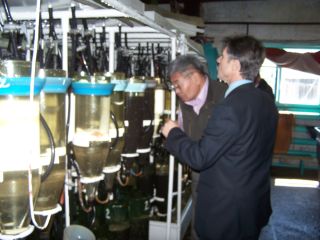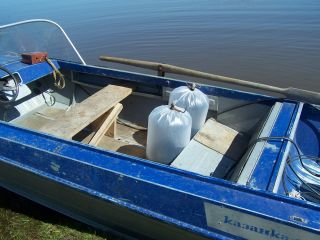In early June of 2011, one hundred million omul spawns were
released into the waters of Lake Baikal. This was made possible
thanks to the financial support of FPLB.
Omul is the main commercial fish, and the trademark of Lake
Baikal.
The Baikal omul has been commercially exploited for more than two centuries. During this time, the population of the famous fish has varied up and down. According to current studies, there are several main reasons for the fluctuations in the number of omul.
The most powerful negative factor in the last decade has been poaching, unprecedented by its scale and impunity, including during the spawning season of the omul. Today we have all the grounds to talk about a new low population period in the stock of Baikal omul. Intensive harvesting of this fish has reduced its numbers drastically, so now artificial breeding has been implemented to maintain the fish stock.
In the basin of Lake Baikal there are three omul fish hatcheries (Bolsherechenskiy, Selenginskiy and Barguzinskiy).
To restore the fishing population, at the Bolsherechenskiy fish hatchery they are performing large-scale work on the artificial reproduction of the Baikal omul. FPLB is monitoring the situation with the population of the omul, attracting public attention to this issue.
Artificial reproduction is a fairly complicated process, requiring considerable exposés and time. The state has allocated for such a noble cause, only 11 million rubles (and it is worth mentioning that this is for three fish hatcheries), which is considerably below the required amount needed. For full-fledged work, the Bolsherechenskiy hatchery alone requires more than 7 million rubles annually.
Thanks to the funding of the FPLB, more than 20% of the total number of spawn has been released into the lake.
BORIS DANILOV, Director of FUND FOR THE PROTECTION OF LAKE
BAIKAL:
"The task of the FPLB is to help save Lake Baikal, and the reproduction of the Baikal omul is directly connected with the preservation of Lake Baikal and its endemic species. Therefore, our Foundation will actively seek cooperation of all people and organizations that care about the fate of the omul. Our second task is to use the resources of the Fund at the federal level, to draw attention to this problem and to take steps in solving it."
Reference:
During the five-year period (2003-2007) the average annual
production of omul spawn released from hatcheries into Lake Baikal
and other water reservoirs totaled 1,089,600,000 pieces, and that
of the young omul totaled 8.3 million pieces. Compared with the
previous five years there has been a decrease in the average annual
production of spawn (by 31.2%) and of young omul (by 34.7%).
According to the calculations of Eastern Siberian Fisheries Center,
the average potential number of omul spawn, the survival of which
can be guaranteed by food resources of coastal forage system, comes
to about 7 billion pieces. If we take this volume as the annual
target figure for Lake Baikal, only half of it is being achieved
today(2-3 billion pieces of spawn roll down from natural spawning
grounds and about 1 billion pieces are produced by the fish
hatcheries)





